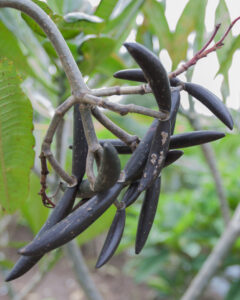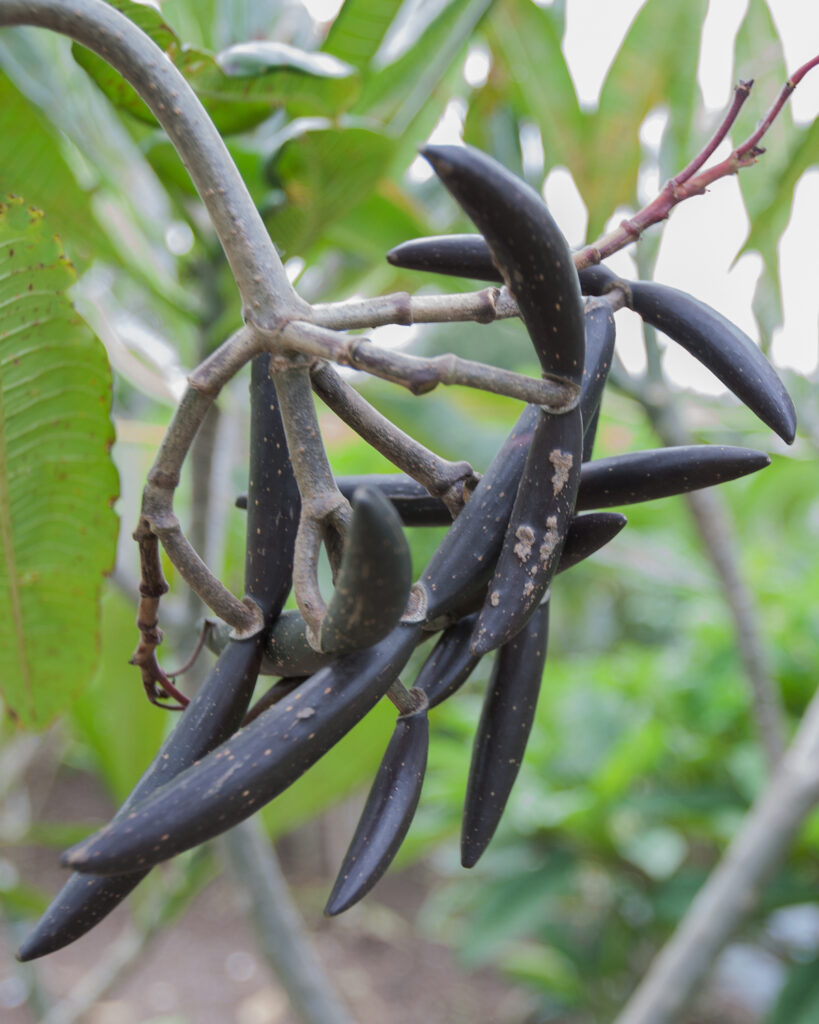My 2018 projects are designed to determine how to speed up the growth of seeds and seedlings to the point of maturity without causing them to grow excessively tall and lanky. The goal is to grow seedlings to maturity and produce blooms as soon as possible. It is important to understand all about the Plumeria seeds and seedlings growing habits and of course the limitations. Using different products, strength and methods can produce different results at different stages during the growing period and in different growing environment and conditions. I’ve experimented with many growing methods and products to determine what works best for me. A short cut would be finding someone in your area and start with what they have had success with and see if it’ll work for you.
Plumeria are Dicots (Two-seed Leaves)
The primary root, called the radicle, is the first thing to emerge from the seed. The primary root anchors the plant to the ground and allows it to start absorbing water. After the root absorbs water, the shoot emerges from the seed. In dicots, the shoot has three main parts: the cotyledons (seed leaves), the section of the shoot below the cotyledons (hypocotyl), and the section of shoot above the cotyledons (epicotyl). The way the shoot emerges from soil or growing media follows two main patterns. In plumeria, the section of the shoot below the cotyledons elongates and forms a hook, pulling the cotyledons and the growing tip through the soil. Once it reaches the surface, it straightens and pulls the cotyledons and shoot tip of the growing seedlings into the air. This is called epigeous germination.
After the shoot emerges, the seedling grows slowly while the storage tissue of the seed diminishes. Soon, the plant develops a branched root system or taproot. Then, true leaves that look like the leaves of the mature plumeria appear. These leaves, unlike cotyledons, photosynthesize light into energy, allowing the plant to grow and develop. When the true leaves start converting light into energy, the seedling needs a source of nutrients.
How Plumeria Seeds Form and Germinate – Before You Start Growing Plumeria From Seed
Optimizing Seed Germination
We know that plumeria seeds need optimal amounts of water, warm temperatures to germinate. If we don’t create the most optimal environment possible, then plants tend to germinate slowly and unevenly. Generally, space is limited, so we want plants to germinate as quickly as possible. Uneven germination can also cause problems. If you have ever had to transplant a flat of seedlings where half are ready to plant and the other half are too small with root balls that don’t slide easily out of their cells, you will understand why. Damage to roots can cause a setback in the growth of the seedling.
One common option to achieve optimal germination temperature in growing media is to use germination mats. These mats allow you to set the temperature according to seed requirements. For Plumeria I’ve found 85 degrees or above seems to be good. Plumeria will germinate in 7 days at 85°F but may take more than 15 days to germinate at 65°F.
Make sure you maintain optimal temperatures for your plumeria seeds. It is also critical to promote air circulation to mitigate fungal pathogens such as those causing damping off. I’ve been growing outside in the sun with very little dampening off problems.
Additional information about seeds and seedlings is available on Plumeria Care
Optimizing Seed to Seedling Growth

The optimal temperature for growing seedlings may be different from seeds. Remember, the optimal temperature will stimulate optimal growth. Cooler temperatures generally slow down growth, and warmer ones speed up growth to a point.
Temperature and time required for growing Plumeria seedlings to transplanting size using FlexiPlugs. Day (F) 75-90, Night (F) 60 or above, Time 15-20 days. I plan on transplanting to pots when I see plenty of roots and three or four real leaves. The photos show seedling at 12 days, the roots are there, but they need a few more leaves.
Over the last four years, I’ve been experimenting with different media for seeds and seedlings. I’ve determined the 2″ x 3″ FlexiPlugs are the best choice for my growing conditions. They give me the ability to water 3 or more times a day and the plugs still provide adequate oxygen to the roots. I soak the FlexiPlugs in Vitazyme and Carl Pool’s Root Activator and the plug does a good job of holding the nutrients. The plugs also provide the best way I’ve found to allow transplanting with minimum root damage. The only issue I found is the slow decomposition rate of the plugs, but I haven’t noticed any negative effects on the growth of the seedlings.
As the seeds germinate and the seedlings grow, it is important to keep the plugs moist by watering less often but longer to accommodate developing root systems. I check my seedling several times a day by pressing the top of the plugs with my finger to check for moisture. If they don’t feel moist or if they look a little dry, I will water. Remember to carefully monitor and water the plants at the edges of trays. They dry out faster than those in the middle. Something else I like about the FlexiPlugs, I actually watered the Plugs every hour or so during the day for 4 days, the seedlings did fine. But you should remember using some other methods, overwatering can increase the probability of plumeria developing damping off or stem rot.
Fertilizing Young Plumeria Seedling – About Growing Plumeria Seedlings
Additional information about seeds and seedlings is available on Plumeria Care

 First the seed grows a root to access water underground. Next, the shoots, or growth above ground, begin to appear. The seed sends a shoot towards the surface, where it will grow leaves to harvest energy from the sun. The leaves continue to grow towards the light source in a process called photomorphogenesis. Plumeria seeds begin the germination process when the seed coat is interrupted and the internal parts of the seed begin to take up water. As the seed swells and the embryo gains access to oxygen, it begins to metabolize the available store of carbohydrates and make proteins that will become radicles, the lower part of the plant that becomes roots, and the plumule, the shoot eventually becomes the upper foliage. As the roots form they descend into the soil in search of moisture and nutrients, while the shoot pushes its way above the soil.
First the seed grows a root to access water underground. Next, the shoots, or growth above ground, begin to appear. The seed sends a shoot towards the surface, where it will grow leaves to harvest energy from the sun. The leaves continue to grow towards the light source in a process called photomorphogenesis. Plumeria seeds begin the germination process when the seed coat is interrupted and the internal parts of the seed begin to take up water. As the seed swells and the embryo gains access to oxygen, it begins to metabolize the available store of carbohydrates and make proteins that will become radicles, the lower part of the plant that becomes roots, and the plumule, the shoot eventually becomes the upper foliage. As the roots form they descend into the soil in search of moisture and nutrients, while the shoot pushes its way above the soil.
